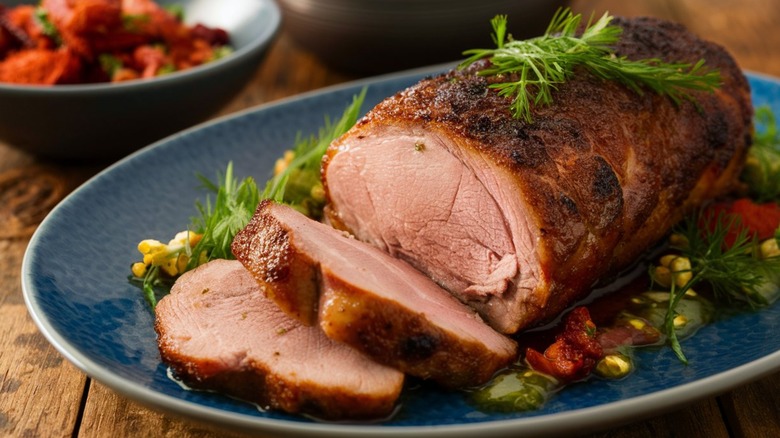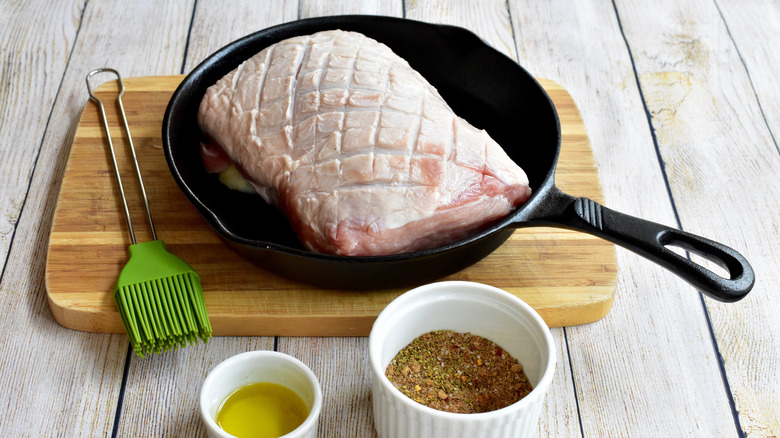How To Make Pork Tender Loin With Crispy Crackling Skin
There's an art to cooking a pork tenderloin that emerges from the oven juicy and well-seasoned. But the pork's exterior is an equally make-or-break aspect of the overall dish. Depending on your approach, the rind surrounding the cut of meat could turn out unappetizing, gray, and chewy. Or, if you follow this tip, it could yield a crispy, browned skin that shatters and crackles with a satisfying crunch as you slice into the cut of meat.
To achieve the latter, familiarize yourself with the process of scoring: The act of using a knife to cut shallow incisions into a piece of meat. This technique, most commonly seen when preparing duck, encourages the meat's fat to render as it cooks, leading to a punchy, salty exterior packed with flavor. Make sure you are precise with your knife work. You should only cut into the tenderloin's layers of rind and fat — cutting any deeper could pierce the meat itself, potentially leading to a dry, crumbly texture.
Removing moisture before cooking is essential
Aside from scoring, it's crucial to pat your meat dry before roasting it in the oven. While relatively simple, this removes extra moisture from the meat's outer layer, which can create steam in the cooking process and lead to a gummy pork skin with no crunch. As a general rule, when it comes to cooking a protein, vegetables, or even frying up a quesadilla, steam is the enemy of crispiness, as it prevents browning on the stove or in the oven.
To dry the exterior of the tenderloin, you can simply use a paper towel to remove excess moisture. Or, you could take it a step further by air-drying your meat: Stick your seasoned and scored pork tenderloin in the fridge, uncovered, for a few hours or even overnight. This will remove further moisture along the exterior without totally drying out the large cut of meat. By the time it hits a heated cast iron pan or Dutch oven, it'll be perfectly prepped for a crackly rind.

